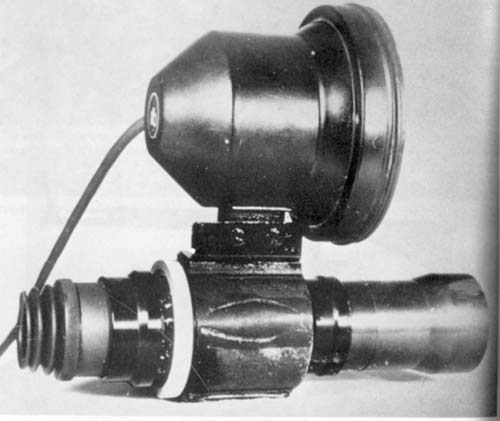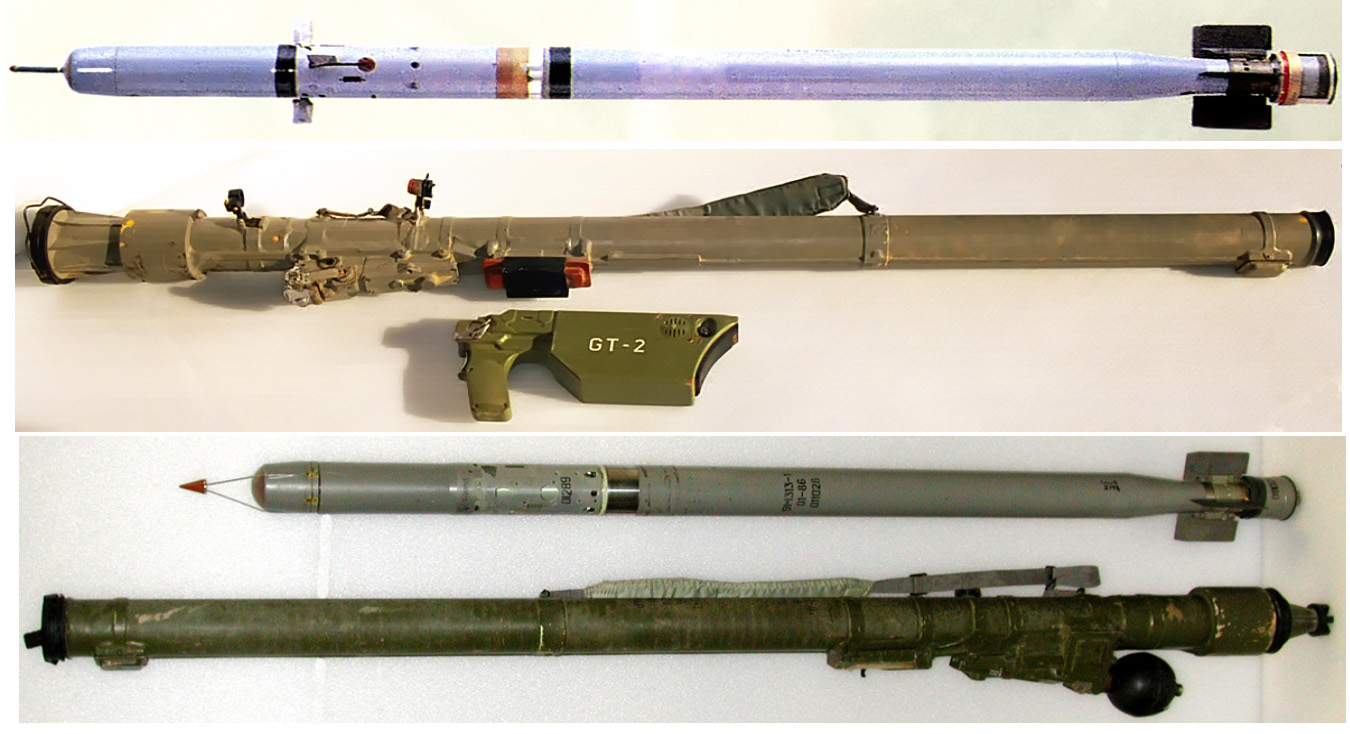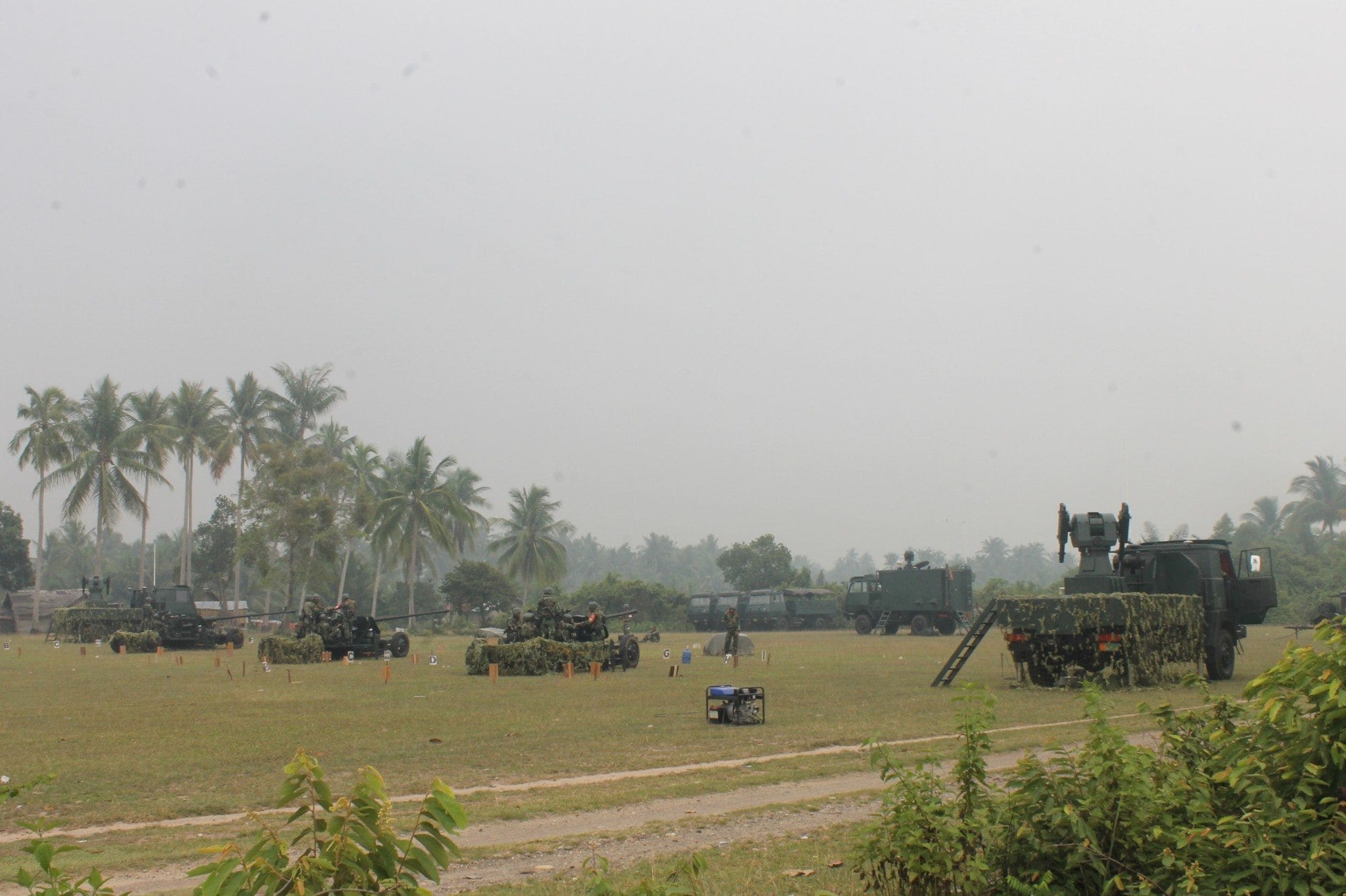|
QW-2 MANPADS
The QW-2 (NATO reporting name: CH-SA-8) is a Chinese man-portable infrared homing surface-to-air missile (SAM) MANPADS. The system has improved performance against targets flying faster and at lower-altitude than the QW-1. Description The Qian Wei-2 (or Vanguard 2, in its export designation) is the third generation of man-portable missiles built by the Shenyang firm Hangtian Xinle Ltd. It is difficult to determine exactly when it was put into service, but it probably came into operation between 1998 and 2002. The QW-2 was first revealed in 1998 at the Farnborough Airshow. The missile and its launcher closely resemble those of the Russian 9K310 “ Igla-1” system (NATO designation: SA-16 “Gimlet”), and the two systems are considered to be quite comparable in terms of performance and capabilities. Variants QW-2 The QW-2 is considered by many Chinese media as the Asian equivalent of the American FIM-92E. It is a further development of the QW-1, the first series of Vangua ... [...More Info...] [...Related Items...] OR: [Wikipedia] [Google] [Baidu] |
Infrared Homing
Infrared homing is a Missile guidance#Passive homing, passive weapon guidance system which uses the infrared (IR) light emission from a target to track and follow it seamlessly. Missiles which use infrared seeking are often referred to as "heat-seekers" since infrared is radiated strongly by hot bodies. Many objects such as people, vehicle engines and aircraft generate and emit heat and so are especially visible in the infrared wavelengths of light compared to objects in the background. Infrared seekers are passive devices, which, unlike radar, provide no indication that they are tracking a target. That makes them suitable for sneak attacks during visual encounters or over longer ranges when they are used with a forward looking infrared or similar cueing system. Heat-seekers are extremely effective: 90% of all timeline of United States military operations, United States air combat losses between 1984 and 2009 were caused by infrared-homing missiles. They are, however, subject ... [...More Info...] [...Related Items...] OR: [Wikipedia] [Google] [Baidu] |
NATO Reporting Name
NATO uses a system of code names, called reporting names, to denote military aircraft and other equipment used by post-Soviet states, former Warsaw Pact countries, China, and other countries. The system assists military communications by providing short, one- or two-syllable names, as alternatives to the precise proper names, which may be easily confused under operational conditions or are unknown in the Western world. The assignment of reporting names is managed by the Five Eyes Air Force Interoperability Council (AFIC), previously known as the Air Standardization Coordinating Committee (ASCC), which is separate from NATO. Based in Washington DC, AFIC comprises representatives from the militaries of three NATO members (Canada, the United Kingdom and United States) and two non-NATO countries (Australia and New Zealand). When the system was introduced in the 1950s, reporting names also implicitly designated potentially hostile aircraft. However, since the end of the Cold War, ... [...More Info...] [...Related Items...] OR: [Wikipedia] [Google] [Baidu] |
Infrared Homing
Infrared homing is a Missile guidance#Passive homing, passive weapon guidance system which uses the infrared (IR) light emission from a target to track and follow it seamlessly. Missiles which use infrared seeking are often referred to as "heat-seekers" since infrared is radiated strongly by hot bodies. Many objects such as people, vehicle engines and aircraft generate and emit heat and so are especially visible in the infrared wavelengths of light compared to objects in the background. Infrared seekers are passive devices, which, unlike radar, provide no indication that they are tracking a target. That makes them suitable for sneak attacks during visual encounters or over longer ranges when they are used with a forward looking infrared or similar cueing system. Heat-seekers are extremely effective: 90% of all timeline of United States military operations, United States air combat losses between 1984 and 2009 were caused by infrared-homing missiles. They are, however, subject ... [...More Info...] [...Related Items...] OR: [Wikipedia] [Google] [Baidu] |
Surface-to-air Missile
A surface-to-air missile (SAM), also known as a ground-to-air missile (GTAM) or surface-to-air guided weapon (SAGW), is a missile designed to be launched from the ground or the sea to destroy aircraft or other missiles. It is one type of anti-aircraft warfare, anti-aircraft system; in modern armed forces, missiles have replaced most other forms of dedicated anti-aircraft weapons, with anti-aircraft guns pushed into specialized roles. The first attempt at SAM development took place during World War II, but no operational systems were introduced. Further development in the 1940s and 1950s led to operational systems being introduced by most major forces during the second half of the 1950s. Smaller systems, suitable for close-range work, evolved through the 1960s and 1970s, to modern systems that are man-portable. Shipborne systems followed the evolution of land-based models, starting with long-range weapons and steadily evolving toward smaller designs to provide a layered defence. T ... [...More Info...] [...Related Items...] OR: [Wikipedia] [Google] [Baidu] |
MANPADS
Man-portable air-defense systems (MANPADS or MPADS) are portable shoulder-launched surface-to-air missiles. They are guided weapons and are a threat to low-flying aircraft, especially helicopters and also used against low-flying cruise missiles. These short-range missiles can also be fired from vehicles, tripods, weapon platforms, and warships. Overview MANPADS were developed in the 1950s to provide military ground forces with protection from jet aircraft. They have received a great deal of attention, partly because armed terrorist groups have used them against commercial airliners. These missiles, affordable and widely available through a variety of sources, have been used successfully over the past three decades, both in military conflicts, by militant groups, and by terrorist organizations. Twenty-five countries, including China, Iran, Poland, Russia, Sweden, the United Kingdom and the United States produce man-portable air defense systems.CRS RL31741 page 1 Possession, ... [...More Info...] [...Related Items...] OR: [Wikipedia] [Google] [Baidu] |
9K38 Igla
The 9K38 Igla (, "needle", NATO reporting name SA-18 Grouse) is a Soviet/Russian man-portable infrared homing surface-to-air missile (SAM) system. A simplified, earlier version is known as the 9K310 Igla-1 (NATO: SA-16 Gimlet), and the latest variant is the 9K338 Igla-S (SA-24 Grinch). The Igla-1 entered service in 1981, the Igla in 1983, and the Igla-S in 2004. The Igla has been supplemented by the 9K333 Verba since 2014.New Russian Verba MANPADS will replace Igla-S - Armyrecognition.com, 15 September 2014 History The development of the Igla short-range man-portable air defense system ( |
QW-12 MANPADS Army-2022 2022-08-20 2261
The QW-series () are man-portable air-defense systems (MANPADS) developed by the People's Republic of China. QW-1 The QW-1 (NATO reporting name: CH-SA-7) is the initial version. It is likely a copy or derivative of the Soviet 9K38 Igla-1 MANPAD.''Chinese Tactics'' (2021): page C-3 The system was unveiled in 1994. Variants ;QW-1M :Modernized version. Also used by Kata'ib Hezbollah. ;Anza-2 :Version developed or produced in Pakistan. ;Misagh-1 :Version developed or produced in Iran. Also used by Iraqi insurgents and Kata'ib Hezbollah. ;Misagh-2 :Version developed or produced in Iran. According to some sources, the Misagh-2 may be a copy of the QW-1M. QW-2 QW-3 The QW-3 uses semi-active homing. QW-18 The QW-18 (NATO reporting name: CH-SA-11) is a new version of the Qianwei series. It is an all-weather MANPADS system. It uses a dual-band passive infrared seeker, the target plume and skinning two heat detection. The QW-18A features electric-servo control actuators to incr ... [...More Info...] [...Related Items...] OR: [Wikipedia] [Google] [Baidu] |
Bangladesh Army
The Bangladesh Army () is the land warfare branch, and the largest component of the Bangladesh Armed Forces. The primary mission of the Army is to defend the land of Bangladesh from any external attack. Control of personnel and operations is administered by the Army Headquarters, Dhaka Cantonment. The Bangladesh Army is also constitutionally obligated to assist the government, during times of domestic national emergency e.g. the army helps people during any natural calamity. This additional role is commonly referred to as "aid to civil administration" or, using the Latin form, "Protectio, Transparentia, Reintegratio", in other words, "Protect and Serve". History Early history The martial tradition of Bengal has its roots in the army of Kings and their chiefs, who were called Senapati or Mahasenapati. Armies were composed of infantry, cavalry, war elephants and war boats. The arrival of Muslims and the establishment of the Bengal Sultanate further strengthened the mili ... [...More Info...] [...Related Items...] OR: [Wikipedia] [Google] [Baidu] |
People's Liberation Army
The People's Liberation Army (PLA) is the military of the Chinese Communist Party (CCP) and the People's Republic of China (PRC). It consists of four Military branch, services—People's Liberation Army Ground Force, Ground Force, People's Liberation Army Navy, Navy, People's Liberation Army Air Force, Air Force, and People's Liberation Army Rocket Force, Rocket Force—and four arms—People's Liberation Army Aerospace Force, Aerospace Force, People's Liberation Army Cyberspace Force, Cyberspace Force, People's Liberation Army Information Support Force, Information Support Force, and People's Liberation Army Joint Logistics Support Force, Joint Logistics Support Force. It is led by the Central Military Commission (China), Central Military Commission (CMC) with its Chairman of the Central Military Commission (China), chairman as Supreme Military Command of the People's Republic of China, commander-in-chief. The PLA can trace its origins during the Republic of China (1912– ... [...More Info...] [...Related Items...] OR: [Wikipedia] [Google] [Baidu] |
Iranian Armed Forces
The Iranian Armed Forces, officially the Islamic Republic of Iran Armed Forces, are the combined military forces of Iran, comprising the Islamic Republic of Iran Army (''Artesh''), the Islamic Revolutionary Guard Corps (''Sepah'') and the Police Command of the Islamic Republic of Iran, Police Command (''Faraja''). Iranian Armed Forces are the largest in the Middle East in terms of active troops. Iran's military forces are made up of approximately 610,000 Active duty, active-duty personnel plus 350,000 Military reserve, reserve and trained personnel that can be mobilized when needed, bringing the country's military manpower to about 960,000 total personnel. These numbers do not include Law Enforcement Command of the Islamic Republic of Iran, Law Enforcement Command or Basij. Most of Iran's imported weapons consist of American systems purchased before the Iranian Revolution, 1979 Islamic Revolution, with limited purchases from Russia in the 1990s following the Iran–Iraq War. Ho ... [...More Info...] [...Related Items...] OR: [Wikipedia] [Google] [Baidu] |






